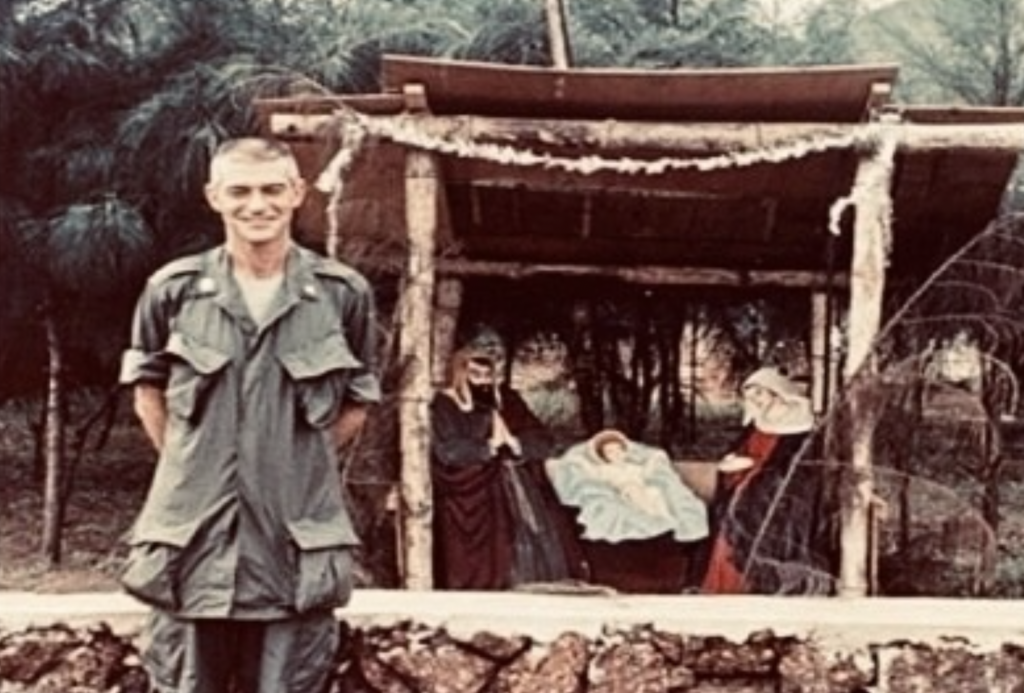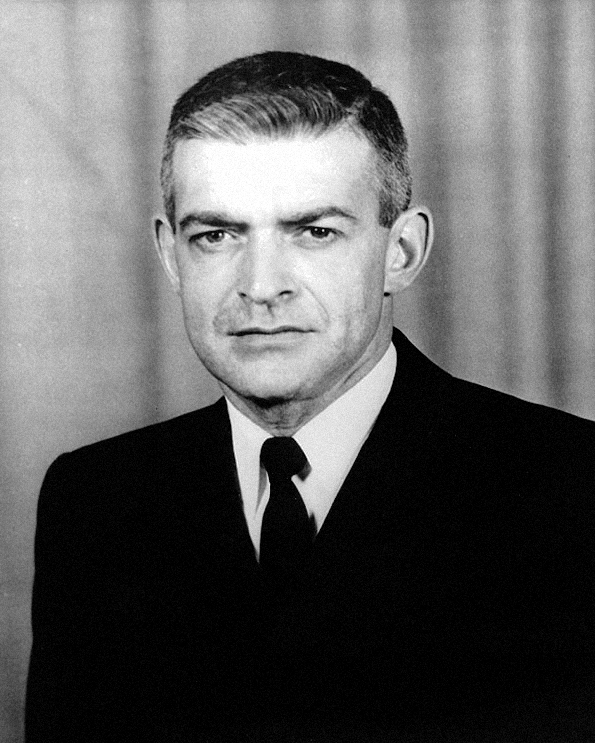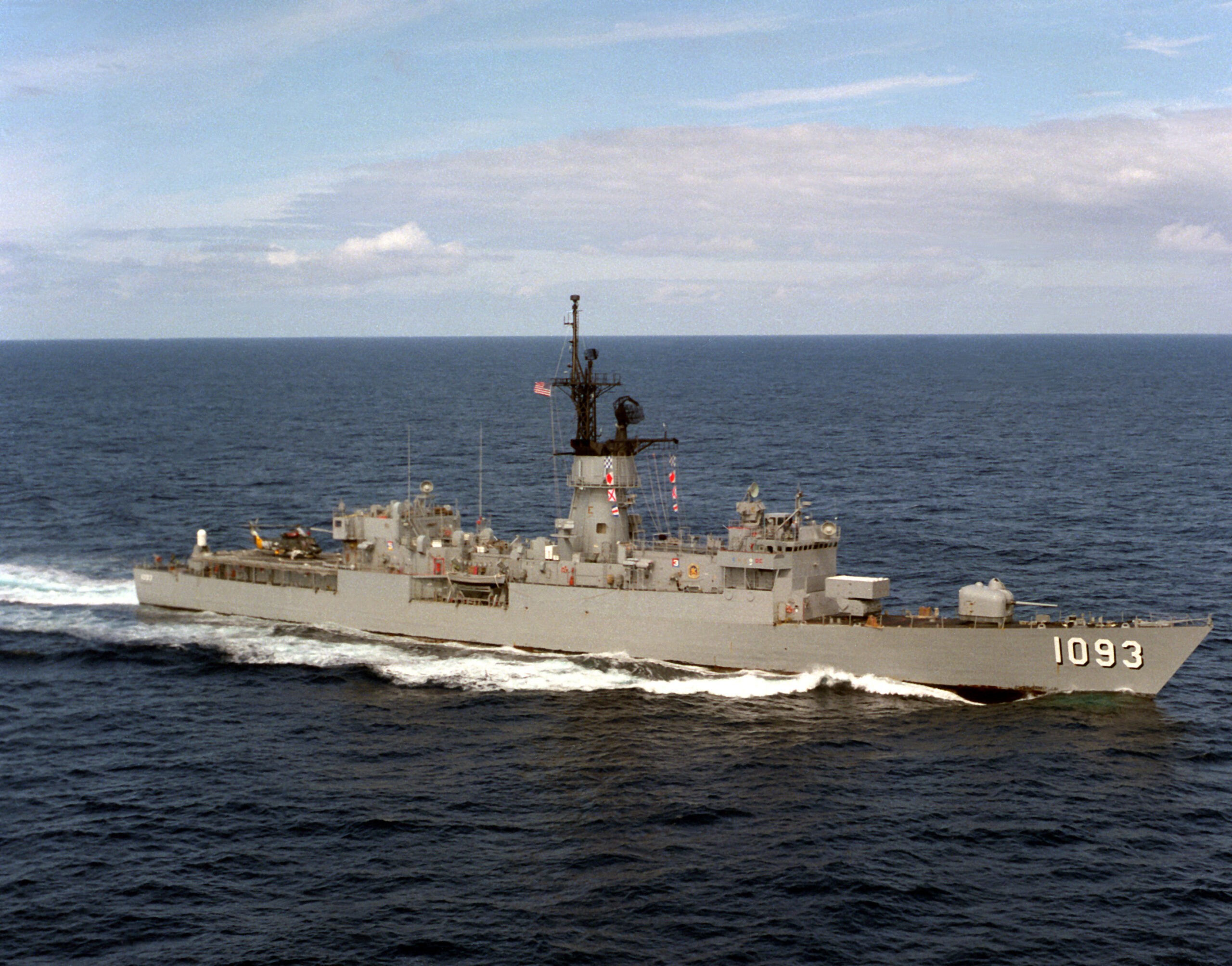The Story Behind the Name of USS Capodanno
Most ships are named for admirals, presidents, battles, and sometimes states or cities. But a select few carry names that reflect not military power—but spiritual courage.
In the long history of the United States Navy, only three ships have ever been named after military chaplains. Only one of those ships was actually built, commissioned, and served with distinction.
That ship was the USS Capodanno (FF-1093), named in honor of Lieutenant Vincent R. Capodanno, a Navy chaplain who gave his life ministering to wounded Marines in the thick of the Vietnam War. His legacy would become more than just a name etched in stone or printed on citations—it would sail across the oceans, carried by a crew proud to serve on a vessel that bore the name of a man whose heroism was defined not by firepower, but by faith.
This is his story—and the story of the ship that carried it forward.
The Making of a Hero: Father Vincent Capodanno
Vincent Robert Capodanno was born on February 13, 1929, in Staten Island, New York. He was the youngest of ten children in a tight-knit Italian-American Catholic family. From an early age, he was drawn to a life of service and faith. After high school and time spent discerning his calling, he was ordained a Roman Catholic priest in 1958 through the Maryknoll Missionary Society.
His first assignments took him to the Far East—Taiwan and Hong Kong, where he worked with the poor and taught in mission schools. But after several years abroad, Capodanno felt a different call—a new kind of mission field.
In 1965, as the war in Vietnam intensified, he requested to join the U.S. Navy Chaplain Corps, specifically to serve with U.S. Marines on the front lines.
He wasn’t interested in comfort or ceremony. He wanted to be where the men were, where the wounds were fresh, and where the fear was real. That’s exactly what he got.
The Grunt Padre in Vietnam

In 1966, Father Capodanno was assigned to the 1st Marine Division in Vietnam. He quickly earned a reputation among the troops. They called him “The Grunt Padre.” He didn’t wait in the rear for casualties to be brought to him. He went into the field. He hiked through the mud. He crawled under fire. He stayed up through the night talking with frightened young men who might not see morning. He said Mass on ammo crates. He carried no weapon, only his rosary, a Bible, and a deep well of courage.
One Marine later said, “He was always around. Always. You’d be sitting in the jungle after a fight, not even sure where he came from, and there he was. Praying with you. Smiling at you. Never afraid.”
In 1967, after briefly returning to the U.S., Father Capodanno voluntarily extended his tour and requested to return to Vietnam. This time, he was assigned to 3rd Battalion, 5th Marines, part of the 1st Marine Division operating in the Quảng Nam Province.
Then came September 4, 1967—a day that would define his legacy.
Operation Swift: The Final Mission
On that morning, Marines from 3/5 were suddenly ambushed by a much larger North Vietnamese force near the village of Dong Son. The battle would become known as Operation Swift, one of the most intense engagements of the war.
As soon as word reached the rear, Father Capodanno grabbed his gear and boarded a helicopter to the fight.
Once on the ground, he moved through chaos—ignoring the explosions, the crack of rifles, and the screams of the wounded. He knelt beside dying men to pray with them. He dragged the injured to cover. He whispered words of comfort. Witnesses say he was everywhere—calm, composed, and utterly fearless.
He was wounded by mortar fire—his face and right hand shredded. Medics tried to evacuate him. He refused. There were still men dying.
In the final moments of his life, Capodanno saw a corpsman attempting to treat a wounded Marine under withering machine gun fire. Without hesitation, Father Capodanno rushed forward, shielding both men with his own body.
Moments later, he was killed by a burst of automatic fire—shot 27 times. He was 38 years old.
A Legacy of Courage

For his selfless heroism, Lt. Vincent Capodanno was awarded the Medal of Honor posthumously in 1969.
But for the men who served with him, no medal could fully capture what he had meant.
“He died like he lived,” one Marine said. “He didn’t pick up a gun. He didn’t try to save himself. He came for us. That’s all he ever did.”
In 2002, the Catholic Church officially opened his cause for canonization. Today, he is known as “Servant of God Vincent Capodanno.” His journey toward sainthood continues, driven by the testimonies of the men who knew him best.
But while the Church considered his heavenly recognition, the Navy prepared a more tangible tribute—one that would carry his name into battle again, across the world’s oceans.
The USS Capodanno (FF-1093)
In 1972, the keel was laid for a new Knox-class frigate—a ship designed for anti-submarine warfare, coastal patrols, and Cold War surveillance. It was to be named the USS Capodanno, the only U.S. Navy vessel named in honor of a chaplain to ever be built and enter service.
The ship was commissioned on November 17, 1973, in Boston, Massachusetts.
On board were veterans of Vietnam, Capodanno’s family, and a new crew ready to carry his story forward.
A Ship with a Soul
From the beginning, the USS Capodanno was not just a warship—it was a memorial. In the captain’s cabin, a framed portrait of Father Capodanno hung on the wall. Sailors would often pause to read the citation of his Medal of Honor, posted near the chapel.
She served with pride throughout the 1970s and 1980s—cruising the Atlantic, Mediterranean, and Caribbean. She participated in NATO exercises, shadowed Soviet submarines during the Cold War, and performed rescue and patrol missions that rarely made headlines but were critical to U.S. naval presence and readiness.
In 1981, the ship rescued 16 Cuban refugees adrift at sea. In another operation, she conducted a diplomatic port visit to Italy—home of Capodanno’s ancestral roots—where local clergy honored the ship and her namesake. Though she never fired a shot in combat, the USS Capodanno projected something just as important—peace, presence, and purpose.
Decommissioning and Afterlife
After 20 years of service, the USS Capodanno was decommissioned in 1993. But that wasn’t the end.
She was transferred to the Turkish Navy, renamed the TCG Muavenet, and served for several more years under a different flag. Yet her origins were never forgotten. Turkish sailors kept the original brass dedication plaque onboard—a quiet tribute to a man who once knelt beside Marines under fire.
The Only One That Sailed
In U.S. Navy history, only three ships have been named for chaplains:
- USS Capodanno (FF-1093) – built, launched, and served
- USS Charles J. Watters – proposed but never constructed
- USNS Fr. Emil J. Kapaun (EPF-16) – announced in 2023, still under development
That makes the USS Capodanno the only one that ever sailed.
The only ship to carry forward the legacy of a chaplain—not for the wars he fought, but for the lives he touched.
Final Thoughts: The Ship That Preached Without Words
In the vast fleet of warships, one frigate stood apart—not for the size of its guns or the power of its engines—but for the man whose name it bore.
Father Vincent Capodanno died as he lived—on the front lines of fear and chaos, bringing light where there was darkness.
The USS Capodanno didn’t just carry sailors and missiles. It carried a story.
A story of courage without violence. Of faith without fear. Of service without limits. And as long as his name sails through memory, The Grunt Padre is still on duty.

Leave a Reply